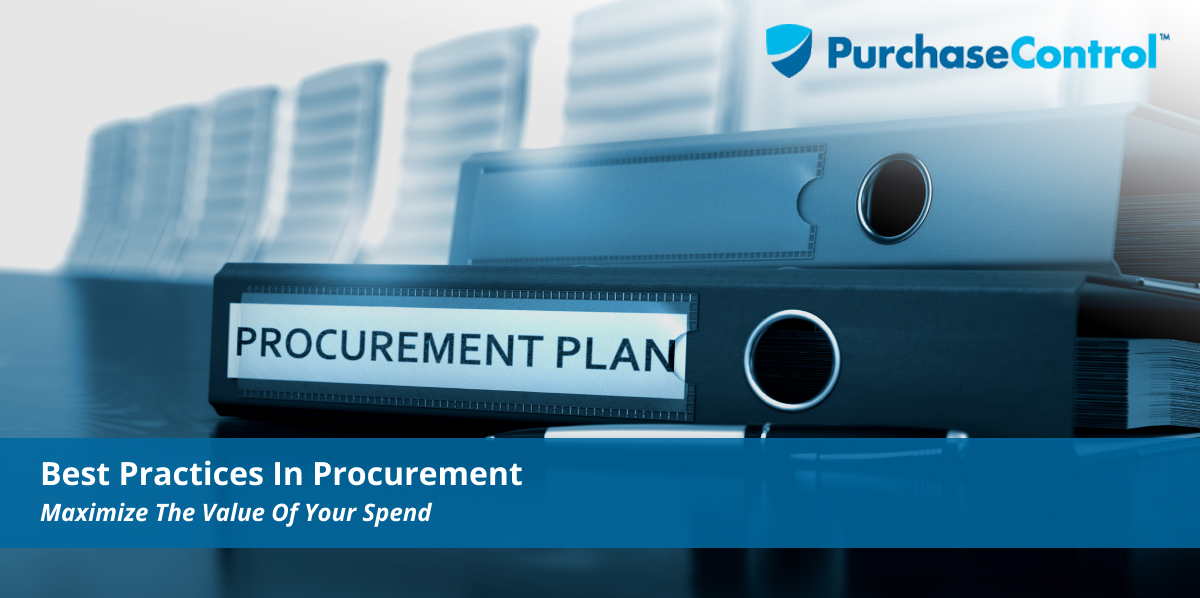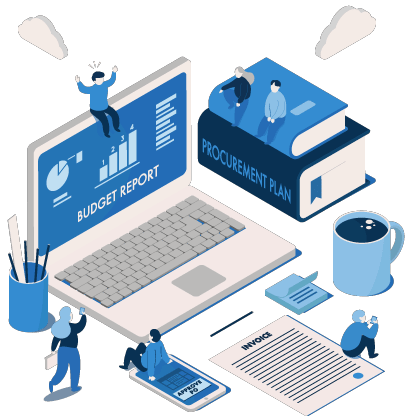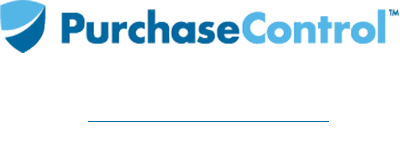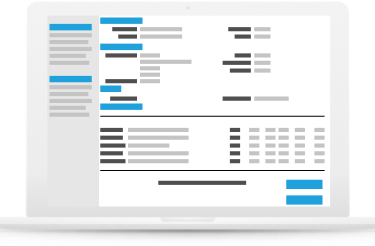The procurement function is a watershed of potential value for any business. Within, rivers of data and dollars flow through channels large and small, touching every area of your business as you purchase and pay for the goods and services that keep your business up and running. In today’s fiercely competitive global market, optimizing your procurement processes is an essential part of protecting (and enhancing) your company’s profitability and performance, as well as providing the savings and value you rely on to grow, innovate, and insulate your organization against the vagaries of a complex and uncertain worldwide economy.
Big or small, establishing best practices can help your business achieve the optimization you need to succeed. Understanding the importance of procurement best practices—and the most effective ways to implement them in your own procurement system—helps your organization leverage data-driven decision-making to secure greater value, savings, and competitive strength for every dollar spent.
Why Applying Best Practices in Procurement is So Important
Whether you’re part of a government body, a global conglomerate, or a small business, your procurement processes have a major impact on the operational and competitive health of your organization. Traditionally, the procurement function was often overlooked or, at best, viewed as a source of savings through maximum spend efficiency (regardless of spend effectiveness).
Digital transformation changed all that when companies throughout the worldwide economy came to recognize the value hidden within the rich data streams of their supply chains and purchasing departments—and began to implement the tools of digital transformation to capture this value.
As a result, procurement professionals are rapidly moving away from the lumbering, paper-shackled paradigms of procurement past to center procurement as a value center.
Establishing and enforcing best practices in procurement supports this ambition in several important ways:
- Proactively engaging with all areas of the business to contextualize procurement’s importance within the larger organization and providing clear, measurable impact on reducing costs (including total cost of ownership, or TCO) at all points within the value chain.
- Presenting transparent and readily accessible spend data, integrated with diverse data sources from inside and outside the organization to provide the most complete, accurate and strategically valuable insights.
- Provide an optimal combination of cost reductions and increased value through process automation, data analytics, and prioritizing strategic supply chain management.
- Streamline all parts of the procurement cycle, including contract management, supply chain management, supplier relationship management, etc.
- Establish a foundation for effective digital transformation and improved business process management throughout the entire organization, leveraging procurement technology with process optimization and strategic planning to meet business needs and support business goals.
As global supply chains grow longer and more complex, and competitive advantage hinges on the availability of actionable insights from reliable data, procurement leaders understand just how important these best practices can be to the success of the companies and organizations they support.
“In shifting their focus to the value chain—i.e., the full range of activities required to produce goods and services—procurement professionals can combine their traditional role of cost reduction with new improvements to their organization’s profits, performance, and competitive power.”
Essential Best Practices in Procurement Optimization
Every procurement department has its own unique needs. But just about every organization can provide a basic framework for procurement optimization and value creation by implementing a few essential best practices:
1. Automate and Analyze with AI
Mining Big Data for actionable insights and powerhouse performance doesn’t happen easily—or at all—with paper procurement. In order to stay abreast, or better still, ahead of the competition, you need digital tools such as automation, artificial intelligence, and analytics.
Choosing a complete eProcurement software solution like PurchaseControl makes it easy to break free from the error-riddled drudgery and wasteful inefficiency of manual procurement. By implementing a digital procurement system, you can:
- Eliminate the need for staff to perform manual data entry and other repetitive, high-volume tasks—along with the human error and delays that come with them.
- Eliminate the waste and expense of paper-based, manual procurement.
- Substantial reductions in on premises IT support, hardware, and software.
- Improved environmental footprint and social responsibility performance.
- Improved staff efficiency and efficacy; lower overhead while allowing staff to dedicate their time and talents to more strategically valuable tasks.
- Reduce the processing lifecycle for all stages of your procure-to-pay (P2P) workflows, including purchase orders and invoicing.
- Consolidate your datasphere with a centralized data management solution.
- Connect disparate data sources for improved analysis.
- Capture all your spend data (reducing risk by eliminating maverick spend and invoice fraud).
- Provide a mobile-friendly, cloud-based solution for stakeholders to enjoy role-appropriate access to data in real time.
- Use intuitive, user-friendly dashboards to quickly access and analyze data for up-to-the-moment insights that drive more strategic sourcing, planning, and process development decisions.
- Monitor performance, spend, and compliance data throughout your supply chain and internal workflows; use key performance indicators (KPIs) and advanced analytics to pinpoint areas in need of improvement, as well as opportunities to reinforce or streamline your supply chain effectiveness and efficiency.
- Improve contract management processes.
- Cloud-based, automated contract management tools make it easy to use legal-approved templates that are automatically populated with accurate and complete supplier data.
- Templates provide greater consistency, clarity, and efficiency across the board while reducing the risk of miscommunication and errors that can damage relationships with suppliers.
- Secure data and digital contract management improve compliance; analytics provide insights that strengthen your procurement team’s negotiation stance and reveal opportunities for collaborative partnerships with key suppliers.
- Upgrade your strategic supplier relationship management.
- Automation makes it easier to evaluate and manage supplier data.
- Vendor portals allow for smooth integration with your software environment.
- Integration also supports the use of vendor punch-out catalogs for accurate and complete pricing and terms in an eCommerce-style, guided buying experience.
- Transparent data streams and analytic tools make it easier to monitor supplier performance and compliance; underperforming vendors can be rehabilitated or replaced.
- Advanced analytics can also be used to develop and automate contingencies within your supply chain to protect business continuity and improve supply chain resilience.
2. Formalize, Document, and Enforce
Like any other part of doing business, procurement works best when everyone’s using the same playbook—and reading from the same page.
- Develop, document, and implement procurement policies and procedures.
- Use KPIs to monitor and evaluate performance and address potential problems before they become severe.
- Establish periodic reviews to measure improvement over time and make any necessary adjustments.
- Provide clear guidance regarding accountability, roles, and expectations.
- Strive for clear communication and a collaborative attitude with both internal and external stakeholders.
- Invest in education and training where necessary to promote buy-in and compliance.
- Integrate supplier management, contract management, inventory management, and other modules with your procure-to-pay datasphere.
- Make data management the core of your procurement optimization plan.
- Prioritize data completeness, accuracy, and full transparency.
- Use spend analysis to identify opportunities for more than just cost savings.
- Take advantage of, or hedge your bets against, seasonality.
- Monitor consumer behavior patterns to develop new products or update existing ones; identify new markets.
3. Prioritize Value
In shifting their focus to the value chain—i.e., the full range of activities required to produce goods and services—procurement professionals can combine their traditional role of cost reduction with new improvements to their organization’s profits, performance, and competitive power.
- Use needs analysis to identify areas where business needs can be better met through supply chain effectiveness than efficiency.
- Revisit your sourcing strategies to identify new opportunities to streamline and strengthen while achieving optimal value and lowest possible TCO.
- Consider the strategic importance and value creation potential of both sustainable procurement and social responsibility in building your procurement strategy.
- Use process optimization along with proactive risk management to ensure maximum compliance and performance with minimal risk exposure.
- Use KPIs to monitor your value chain for opportunities to further refine workflows and recapture lost value.
- Adjust workflows as necessary to preserve working capital necessary for emergencies, investment, and innovation.
4. Practice Proactive Supplier Relationship Management
Your suppliers are effectively your partners in shared success. The more effective your supplier relationships are, the better the chances you’ll be able to take advantage of valuable opportunities, secure the best possible pricing and terms, and ensure your supply chain is both reliable and flexible enough to thrive when times are good and help you survive when trouble comes to call.
- Focus on mutually beneficial opportunities.
- Prioritize collaboration and communication; connect with suppliers as trusted partners.
- Monitor vendor compliance and performance with KPIs.
- Be open and honest with your suppliers in preserving relationships or moving on to new ones.
- Encourage the use of digital tools to merge your data streams, share business critical information in real time, and improve business intelligence for all parties.
- Utilize procurement software tools to streamline your invoice processing workflows to ensure payments are made on time (or early, to capture discounts) and preserve your reputation as a reliable customer.
5. Take Control of Inventory Management
Managing your supply chain doesn’t end at the warehouse door. Whether you’re placing needless orders because you don’t have a clear picture of inventory levels or holding onto obsolete goods that eat into profit margins, poor planning and ineffective inventory management can increase expenses and waste in your procurement function.
- Connect inventory management to your procurement data management solution to provide greater transparency and better control.
- Ensure buyers also have access to real-time inventory data to avoid needless orders and minimize waste.
- Establish and monitor KPIs for inventory processes; use analytics to improve inventory planning and refine internal controls as necessary.
Step up to Best-in-Class Procurement
Why go with the flow when you can harness your data stream for performance, value, and a healthy bottom line? Today’s procurement leaders aren’t just optimizing spend management—they’re building stronger, more competitive organizations through the use of best practices in procurement. You can join them by ensuring your procurement processes prioritize value, savings, and performance, along with a communicative, collaborative approach.
Refine Your Procurement Practices for Maximum Performance and Accuracy with PurchaseControl
Find Out How








